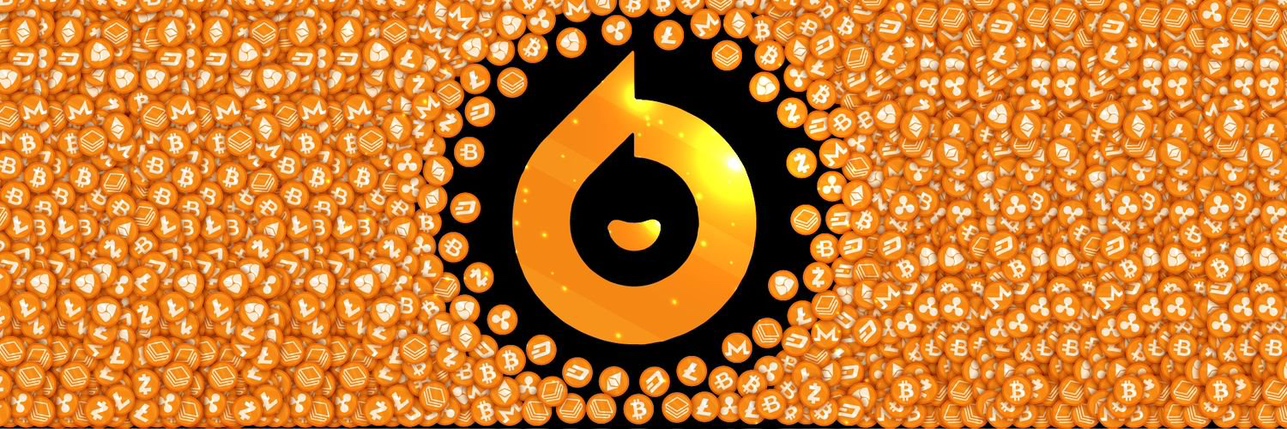
Meta Spatial priceSPAT
Meta Spatial market Info
Live Meta Spatial price today in USD
The cryptocurrency market on December 2, 2025, finds itself navigating a landscape shaped by evolving regulatory clarity, significant technological advancements, and continued, albeit sometimes volatile, institutional adoption. Following a notable downturn at the start of December, with Bitcoin and major altcoins experiencing drops of over 5%, market participants are keenly observing key developments that could dictate the trajectory for the remainder of the year.
Market Performance and Price Drivers
The initial days of December have seen the crypto market start in the red, extending a downtrend from November where billions in value were erased across major assets. Bitcoin (BTC) dipped below $87,000, while Ethereum (ETH) saw its price drop significantly. Other major cryptocurrencies like XRP, BNB, and Solana (SOL) also experienced declines. This recent pullback is largely attributed to cautious trading sentiments ahead of the upcoming Federal Reserve interest rate decision, scheduled for December 15. Expectations are high for a rate cut, with data suggesting an 89% probability, which historically benefits risk assets like cryptocurrencies by increasing market liquidity.
Despite the short-term volatility, the broader outlook for Bitcoin and the crypto market in 2025 remains largely optimistic among many experts. Bitcoin had previously surged past $126,000 earlier in the year, reaching an all-time high. Analysts point to persistent institutional inflows and a more crypto-friendly political environment, particularly in the US, as strong bullish indicators. Some predict Bitcoin could still hit $250,000 by year-end, driven by improving dollar liquidity and potential future bank lending.
Evolving Regulatory Landscape
Regulatory developments continue to be a dominant theme, fostering a more mature and integrated crypto ecosystem. Stablecoin regulation is at the forefront, with significant progress across major economies. In the United States, the 'Guiding and Establishing National Innovation for U.S. Stablecoins (GENIUS) Act' was signed into law in July 2025, establishing the country's first comprehensive federal framework for payment stablecoins. This legislation defines payment stablecoins as digital assets redeemable 1:1 for dollars and backed by highly liquid, safe assets, explicitly clarifying they are not securities. Similarly, the European Union's MiCA (Markets in Crypto-Assets) regulation is seeing full enforcement by national regulators by the end of Q1 2025, requiring the delisting of non-compliant stablecoins by the end of January 2025. The UK is also prioritizing stablecoin regulations in 2025, consulting on issuance and custody rules.
Globally, this push for regulatory clarity is enhancing legitimacy and reducing systemic risks, making digital assets more appealing to institutional investors. The overall sentiment indicates a shift towards a more structured and innovative environment for the crypto industry, moving away from past uncertainties.
Ethereum's Fusaka Upgrade and Scaling Milestones
Ethereum is currently undergoing a pivotal period of technological advancement, with the 'Fusaka' upgrade set to deploy on its mainnet in December 2025. This landmark upgrade, following the 'Pectra' upgrade in May, is critical for enhancing Ethereum's scalability and performance. A key component of Fusaka is EIP-7594, known as PeerDAS, which significantly improves data availability for rollups by enabling nodes to sample smaller fragments of data, paving the way for an eightfold growth in blob capacity. The network's block gas limit was notably increased to 60 million on November 25, underscoring growing confidence in its robustness.
These advancements, combined with the continued rise of Layer 2 solutions, are dramatically scaling Ethereum's transaction capacity, with some solutions processing over 31,000 transactions per second. The goal is to eventually reach 100,000 transactions per second on-chain with optimized data storage and compression.
DeFi and Institutional Adoption Trends
Decentralized Finance (DeFi) continues to evolve at a rapid pace, with 'DeFi 2.0' introducing enhanced scalability, security, and user-friendly interfaces. Cross-chain interoperability, AI optimization, and increased regulatory clarity are driving this evolution. A major trend for 2025 is the tokenization of real-world assets (RWA), which is expanding the utility of DeFi beyond crypto-native assets by bringing tangible assets like real estate and bonds onto blockchain networks, with some reports valuing on-chain RWAs at over $12 billion.
Institutional adoption of cryptocurrencies has surged throughout 2025, with major financial institutions allocating increasing portions of their assets under management to digital assets. Bitcoin and Ethereum remain core holdings, but there's growing interest in high-growth assets like Solana and Polkadot, particularly those offering enhanced scalability and innovative DeFi applications. The integration of AI and blockchain technology is also creating new opportunities, with AI-powered DeFi platforms enhancing automation, security, and risk management.
In conclusion, despite recent market fluctuations, December 2, 2025, highlights a crypto market that is maturing rapidly, driven by robust regulatory frameworks, significant technological upgrades, and deepening institutional integration. These factors are collectively shaping a more resilient and widely adopted digital asset ecosystem.
Now that you know the price of Meta Spatial today, here's what else you can explore:
How to buy crypto?How to sell crypto?What is Meta Spatial (SPAT)What are the prices of similar cryptocurrencies today?Want to get cryptocurrencies instantly?
Buy cryptocurrencies directly with a credit card.Trade various cryptocurrencies on the spot platform for arbitrage.Meta Spatial price prediction
What will the price of SPAT be in 2026?
In 2026, based on a +5% annual growth rate forecast, the price of Meta Spatial(SPAT) is expected to reach $0.00; based on the predicted price for this year, the cumulative return on investment of investing and holding Meta Spatial until the end of 2026 will reach +5%. For more details, check out the Meta Spatial price predictions for 2025, 2026, 2030-2050.What will the price of SPAT be in 2030?
About Meta Spatial (SPAT)
Meta Spatial Token: A Pioneering Concept in Cryptocurrency
In the fast-paced world of digital currencies, innovation and adaptability are as valuable as the currencies themselves. One such innovative concept is the Meta Spatial Token (MST), a breakthrough in the crypto space, that aims to redefine the essence of cryptocurrency and its future role in the world economy.
Concept of Meta Spatial Token
The Meta Spatial Token (MST) underpins a bold new vision in the cryptocurrency sphere. Essentially, MST is a novel type of cryptocurrency that harnesses blockchain technology to implement spatial, temporal, and personal parameters within its structure.
Unlike traditional cryptocurrencies, MST brings an innovative twist – the integration of space and time into the fundamental architecture of the coin. This makes Meta Spatial Token geographically and chronologically sensitive, affording it attributes never seen before in the realm of digital currency.
Significance of Meta Spatial Token
The introduction of spatial and temporal dimensions into a digital currency adds an extraordinary layer of flexibility and functionality to the crypto industry. MST can be used as a spatial-temporal asset, meaning its value could be dependent on certain conditions such as location or time.
In essence, MST presents a radical departure from the "one-size-fits-all" approach that has dominated the cryptocurrency world. By considering factors such as geography and time, MST incorporates real-world elements into the virtual landscape of cryptocurrencies, potentially increasing its applicability and usefulness in everyday transactions.
Key Features of Meta Spatial Token
MST is built on an advanced blockchain network. It operates within its ecosystem where transactions occur based on spatial and temporal parameters.
Customizability
Thanks to the integration of space and time factors, MST allows for incredible customization. Users can tie the value of their tokens to their location or a specific time, catering to their unique requirements.
Flexibility
Being spatial-temporally sensitive, MST offers superior flexibility compared to traditional currencies. This aspect allows for a multitude of new applications, from localized digital economies to timed tokens that could carry greater value at certain periods.
Security
Inheriting the robust security of blockchain technology, MST ensures secure transactions. As with other cryptocurrencies, MST transactions are encrypted, ensuring user information remains confidential, and transfers are secure from any potential threats.
In conclusion, the Meta Spatial Token represents a revolutionary leap in cryptocurrency invention, opening up unprecedented possibilities. By incorporating elements of space and time, MST pushes the boundaries of what a digital currency can be, potentially reshaping the future of the crypto industry.
Bitget Insights




SPAT resources
Tags:
What can you do with cryptos like Meta Spatial (SPAT)?
Deposit easily and withdraw quicklyBuy to grow, sell to profitTrade spot for arbitrageTrade futures for high risk and high returnEarn passive income with stable interest ratesTransfer assets with your Web3 walletWhat is Meta Spatial and how does Meta Spatial work?
Buy more
FAQ
What is the current price of Meta Spatial?
What is the 24 hour trading volume of Meta Spatial?
What is the all-time high of Meta Spatial?
Can I buy Meta Spatial on Bitget?
Can I get a steady income from investing in Meta Spatial?
Where can I buy Meta Spatial with the lowest fee?
Related cryptocurrency prices
Prices of newly listed coins on Bitget
Hot promotions
Where can I buy Meta Spatial (SPAT)?
Video section — quick verification, quick trading









